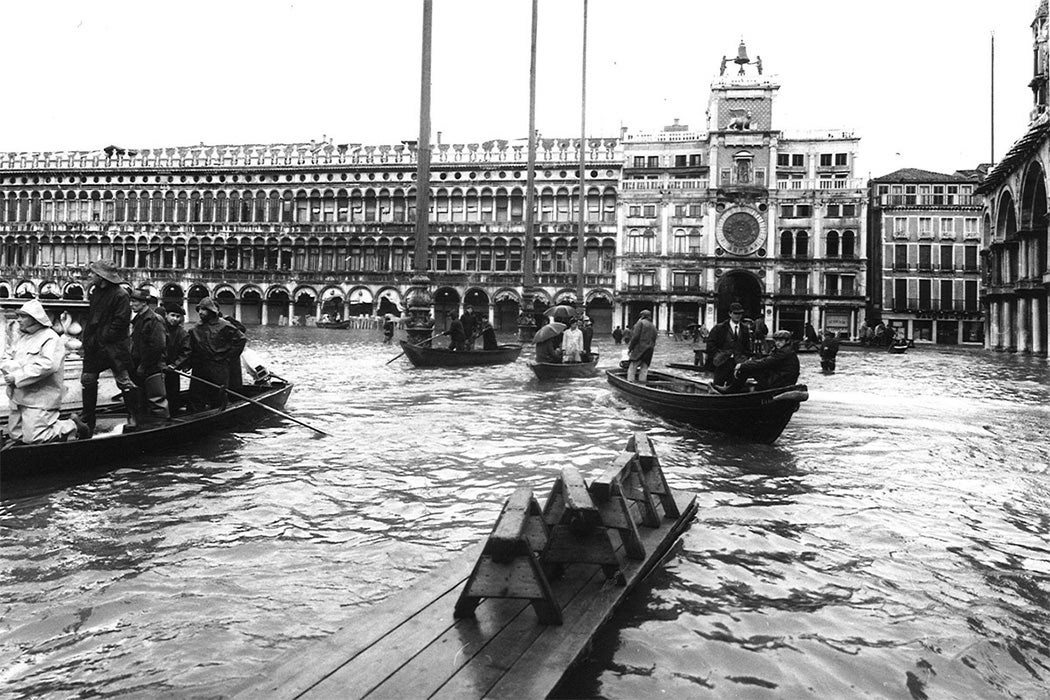The recent acqua alta in Venice has been described as the worst flooding in 50 years. This makes it the second worst “high water” in the last century for the sea-besieged city. The disastrous record of 1966 still stands. Memories of that flood, which sparked an international rescue program for art and architecture, were naturally revived by the most recent flooding.
Fewer people remember that, on the same day as Venice’s record, November 4, 1966, Florence suffered its worst ever flooding. Florence is thirty miles from the Mediterranean. The flooding was not caused by a high tide backing up into the city, but by torrential rainfall—8 inches in 35 hours, after an abnormally wet autumn—and by the decision to release water from dams upriver.
The Arno, which flows right through the Tuscan city, reached almost twenty feet higher than normal that day. Unlike Venice, Florence had only a limited experience with major flooding (notably in 1333 and 1844). At least one hundred Fiorentinos died in 1966’s flood. On the cultural front, buildings, sculptures, paintings on canvas, frescoes, books and manuscripts, musical instruments, and armor were damaged or destroyed. Even the collection of American documentary films at the Cineteca was ruined.
The two-pronged international effort of rescue and repair in Florence and Venice at the same time was unprecedented. Conservator Norman Brommelle’s speech a few years afterwards to the Royal Society of Arts detailed the situation in Florence:
In the weeks which followed the flood, when Florence bore the appearance of a drained aquarium, the four chief preoccupations were the effects of the damp retained in the walls and rising by capillary action from soaked foundations, the prevalent yellowish mud, and the presence, in local concentrations, of heavy brown fuel oil from central heating plants.
Porous stone was soaked through with the oil. Following the flooding came the mold, a spreading fungal ghost of the vanquished water. Against all this, an army of local and international volunteers, called angeli del fango (mud angels), worked to clean up the muck, and to salvage and restore what they could.
The effort was heroic, as were the on-the-spot experiments with new methods of restoration. Brommelle describes the ad hoc efforts to remove saturated oil, stop creeping mold, and remove “thousands of square feet of flood-damaged frescoes” from walls. Some things were unsalvageable; others, like Cimabue’s famed Crucifixion in Santa Croce, could not be restored to a pre-flood condition.
Weekly Newsletter
The cultural patrimony of Italy was dealt a one-two blow with these two simultaneous flooding events. The condition of many buildings and art works, due to lack of funding and maintenance, and the corrosive air pollution, before the flooding became a national scandal in retrospect. The experience gained in these restoration efforts, however, have become universal since.
Today, it’s tourists who flood Florence. How many see the markers twice their height up walls memorializing the high water line? How many know the streets they walk on were once thick with yellow mud and heating oil? The epic work of cultural rescue has been folded into the city’s centuries-old patina.







